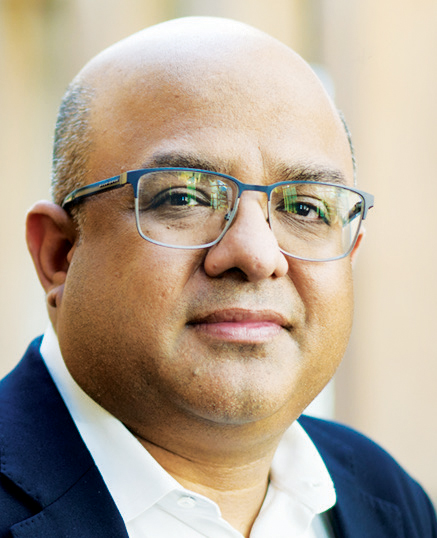Thank you for helping us be “better together; never alone”
 |
| Dr Ahmer A. Karimuddin |
It became clear to me early on that my most important role as president would be to bear witness and find gratitude. As I reflect on the past year, I am sincerely grateful for the opportunity to have served as president and, even more so, for each of you who has continued to show up despite the challenges we have been facing. You encompass what it means to be “better together; never alone.”
As physicians, we are happiest when we can give patients the care they need—the care they deserve. Yet in our resource-constrained environment, we continually find ourselves having to do more with less, often unable to bring our best to work. This has led to over 40% of physicians reporting burnout and many reaching out to the Physician Health Program for help. This is the time when we need to lean into one another and be better together; never alone. As Tolstoy wrote, when someone is in distress, our most important role as colleagues and leaders is to “come closer, as close as you can to [he] who suffers, and try to help.” By doing so, we can bear witness to their distress and assure them they are not alone.
Over the past year, I have tried to get closer and bear witness to the many challenges facing our colleagues across the province. From Prince George to Grand Forks, from Surrey to Nanaimo, the moral distress and burnout are real. I’ve sat with colleagues as they spoke of the ever-increasing burdens they face daily—realities I couldn’t truly comprehend from afar. And when I met with colleagues in Kelowna, Nelson, Powell River, and Langley, it became clear that they were showing resilience in times more challenging than even I, as a colleague, could have imagined.
Over the past year, I have also witnessed the astounding contributions you each make in the lives of your patients and in your communities. I have watched with admiration as you continue to rise above and make a significant and positive impact during a health care crisis in a constrained system. The impact we as a profession have in restoring wellness and hope is real. The joy we feel with our colleagues and friends is real. The excitement I saw at medical staff association and division meetings, at Physician Quality Improvement and UBC Sauder School of Business graduations, and at Joint Collaborative Committees and Representative Assembly events is real. The commitment to do better, as seen in the Canadian Medical Association’s apology to Indigenous Peoples, is real. The trust that underpins our relationships with patients and communities is real.
While it is imperative that we address the system’s challenges, let’s also remember the good we do and receive in our professional lives. We have much to be grateful for, and many are grateful to us. And if we lean into gratitude, I believe we can show ourselves, our colleagues, and our patients a future of hope and transformation.
Thank you for letting me bear witness to your hard work and your commitment to the profession and your patients this past year. Thank you to the amazing staff at Doctors of BC who work tirelessly to represent and advocate for physicians. Thank you to the incredible individuals that make up the Doctors of BC board, who taught me about leadership, humility, and service. Thank you to my colleagues at St. Paul’s Hospital, who helped me care for my patients daily. And thank you to my family and loved ones, who cheered me on and never wavered in their love. Let this gratitude and love guide us in the years to come.
—Ahmer A. Karimuddin, MD, FRCSC
Doctors of BC President
hidden
 |
| This work is licensed under a Creative Commons Attribution-NonCommercial-NoDerivatives 4.0 International License. |

